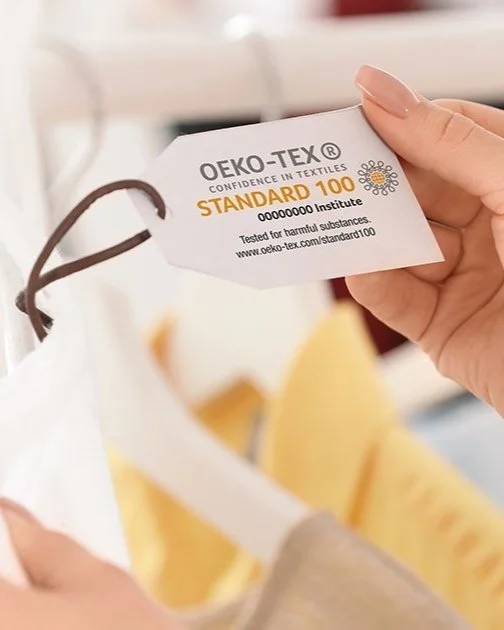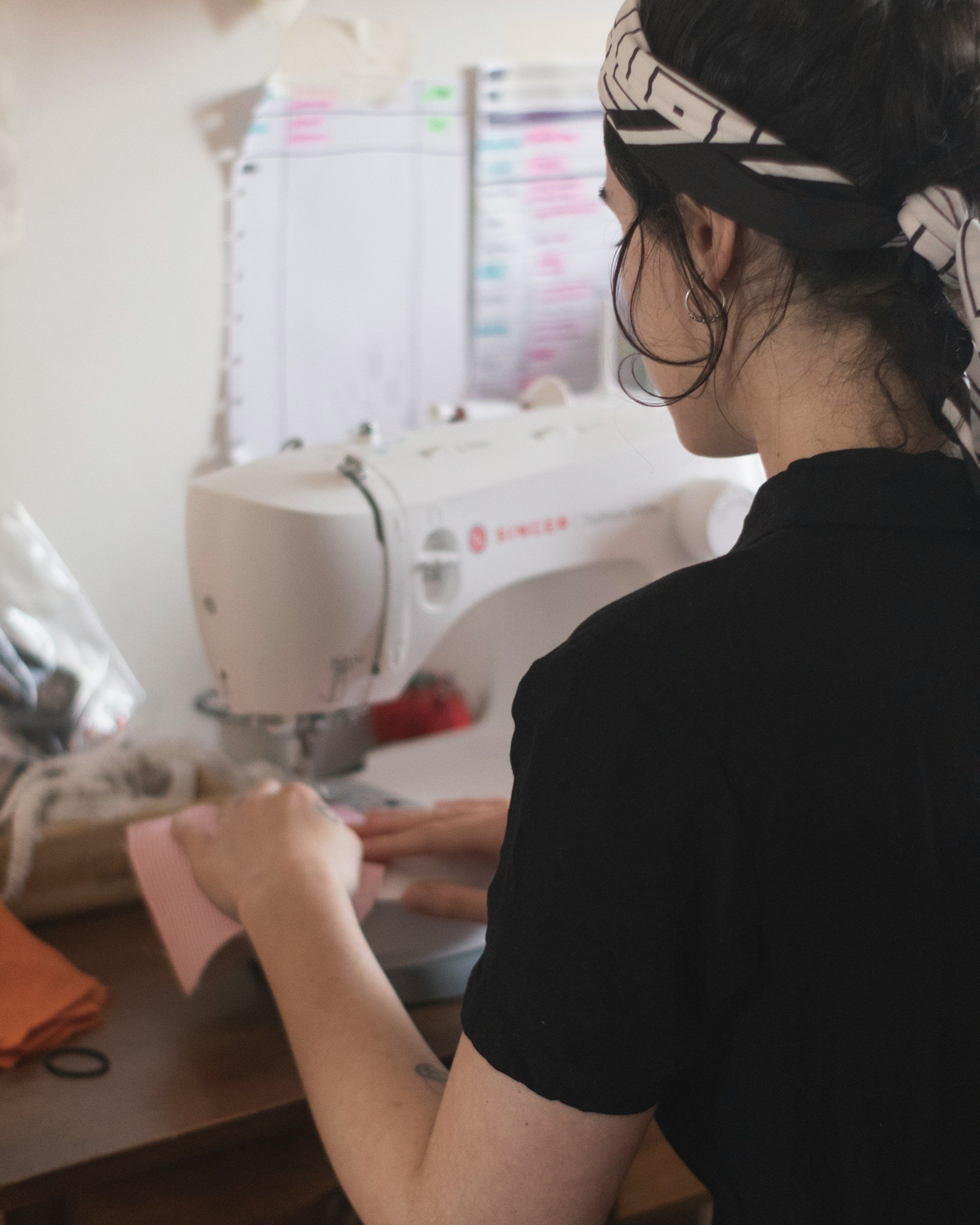What is Greenwashing & 5 Easy Tips to Avoid It
A Simple Guide to Greenwashing
When you see a product advertised as sustainable, natural, non-toxic, or organic, you instantly feel good about buying it, right? Advertising companies know from research, the majority of people want to support eco-friendly products and brands. However, what happens when marketing teams prey on this sustainability mindset for profit? Greenwashing happens.
What is greenwashing? Let’s talk about it!
an example of greenwashing in fashion where t-shirts are being labeled as good for the planet when the rights & health of workers are being ignored. see why a t-shirt should never be $5.
What is Greenwashing?
Greenwashing is a marketing strategy that falsely represents a company's or product's sustainable efforts. Greenwashing creates the illusion that a company does what is best for the planet and people; however, most don't follow through with their claims. According to a report by TerraChoice Environmental Marketing, 95% of green-labeled products are actually greenwashed.
Greenwashing occurs in various ways, so how do you tell if the claims are legitimate or empty promises? Here are some red flags to watch out for!
1) Environmental Imagery
Companies are often found to simplify their packaging and feature natural-looking textures, materials, leaf-themed motifs, and green-toned elements. This attracts the shopper’s eye because it appears to have a more natural appearance, but it tricks the consumer into thinking the product is automatically eco-conscious.
2) Vague Catchphrases
Advertisers commonly pair environmental imagery with phrases like “100% natural” and “non-toxic” and other vague phrasing. Be aware these phrases are not strictly regulated by any authority or organization, like the Federal Trade Commission (FTC), and typically have no bearing on what’s in the product.
3) Bait and Switch
Companies will claim a product is made of sustainable materials, which might be true, but the rest of their business is not. Often companies will use low-cost manufacturers with illegal labor wages and allow poor working conditions to increase profit margins associated with sustainably sourced products. They bait the consumer into buying their product with sustainable claims but don’t apply the sustainability business model through their entire company.
4) Irrelevant Claim
When a company advertises that products are free of specific toxins or chemicals, but those same ingredients are already illegal, this is an irrelevant claim. They shouldn’t be using these substances, to begin with, so they shouldn’t need to be advertised. This tactic further confuses customers into buying products that are only doing the bare minimum.
5) Forced Fallacy
When given two options, people usually choose the option most beneficial to them, right? Companies are guilty of tricking customers into believing they are making a better choice with a greenwashed product when in reality, both choices are equally unhealthy. For example, with organic cigarettes vs. conventional cigarettes, both are harmful to someone’s health.
Examples of Greenwashing
There are many documented cases of greenwashing, but some examples are commonly referenced and formally addressed by authoritative organizations.
The Malaysia Palm Oil Council advertised itself as eco-friendly in a 2008 tv commercial. They stated their plantations “give life” and “help the planet breathe.” However, critics cited palm oil plantations are a cause of mass rainforest destruction and ecosystem disruption. The U.K. Advertising Standards Authority determined it was in violation of advertising standards.
Similarly, the Royal Dutch Shell company led the public to believe their oil sands development was “sustainable” despite no evidence. Due to the inability to show any sustainable practices with facts, the U.K Advertising Standards Authority also agreed this was false information and was greenwashing the public to favor their destructive construction.
In 2006, American Spirit lost a lawsuit that forced the company to remove the organic labeling from their cigarettes. Researchers found these claims were misleading customers, and all tobacco companies have since been banned from using any related terminology due to their products’ unhealthy nature.
Why Does Greenwashing Matter?
Even though greenwashing makes sustainability more visibly mainstream, it damages genuine environmentally-friendly companies and products. Greenwashing allows customers to believe they are making ethical and sustainable decisions while contributing to the harm they want to avoid. Greenwashing creates an illusion of sustainability and is highly counterproductive to the sustainability movement. Household cleaners, cosmetics, and children’s products are the most commonly greenwashed items. This is alarming because those are also the most frequently purchased products. In addition, 8 out of 10 consumers stated they care about sustainability and would pay more for sustainably-made products. While this is excellent news for our planet and future generations, it also makes conscious consumers an easy target for greenwashing.
How to Avoid Greenwashing?
Now that we know how to identify greenwashing, how do we prevent being fooled? Thankfully in more recent years, the FTC is starting to be more strict with green initiative marketing and providing marketers guidelines. They most recently updated their Green Guides in 2012, which provide information specifically for companies regarding their environmental advertising.
As a consumer, there are some easy ways to tell what companies and products are actually sustainable and following through on their claims.
1) Be Skeptical
Read labels with skepticism and know that you can’t trust fancy marketing and product design.
2) Know Certifications
Get familiar with global certifications and national certifications in your area. Some commonly recognized logos are Certified B Corp, the Leaping Bunny Program logo, Green Seal, and Rainforest Alliance. The Ecolabel Guide app is also an excellent resource for looking up what a certification label stands for and if it’s legitimate. Read more about certifications here.
3) Avoid Generalizations
“Chemical-free,” “organic,” and “natural ingredients” are very broad terms and can be applied to anything. Look for companies providing more specifics on their products. “Certified fair trade, USDA organic, GOTS certified,” etc.
4) Look for Facts
Before purchasing products, do a quick google search on the company. Check for news articles about potential controversial claims or press releases on sustainability efforts. This information is usually able to be confirmed with reputable sources.
5) Visit the Company Website
Any company that claims sustainability and is doing the real work will have this information proudly displayed. They will be able to explain their processes in detail, why it matters to their company, and be able to provide specifics on how their initiatives are benefitting the planet.
Don’t forget your voice matters. Let companies know you find their greenwashing practices problematic. You can get involved by sending a company an email to a company you see using greenwashing. You can even use this easy copy-and-paste email template.
Greenwashing is everywhere, so don’t worry if you accidentally fell victim to false claims at one point. Just by knowing greenwashing exists is half the battle. By reading this article, you are now already more informed and less likely to be manipulated by “green” advertising in the future.
Karmen Flores is a creative entrepreneur based in Michigan. Karmen shares all about plant-based, sustainable, intentional living on her blog, Karmen Collective. From recommendations for all things plant-based to tips for living more sustainably, Karmen makes living with intention less intimidating and more accessible. You can connect with Karmen on Instagram @karmencollective and at www.karmencollective.com
MAKE SURE TO PIN THE PHOTO BELOW TO SAVE THIS POST FOR LATER!
WANT to find SUSTAINABLE BRANDS? VISIT OUR BRAND DIRECTORY!
Our Brand Directory is home to hundreds of sustainable brands, from makeup to cleaning supplies, from underwear to shoes. We have broken everything down by category for easy shopping, along with discount codes unique to Sustainably Chic viewers.
































